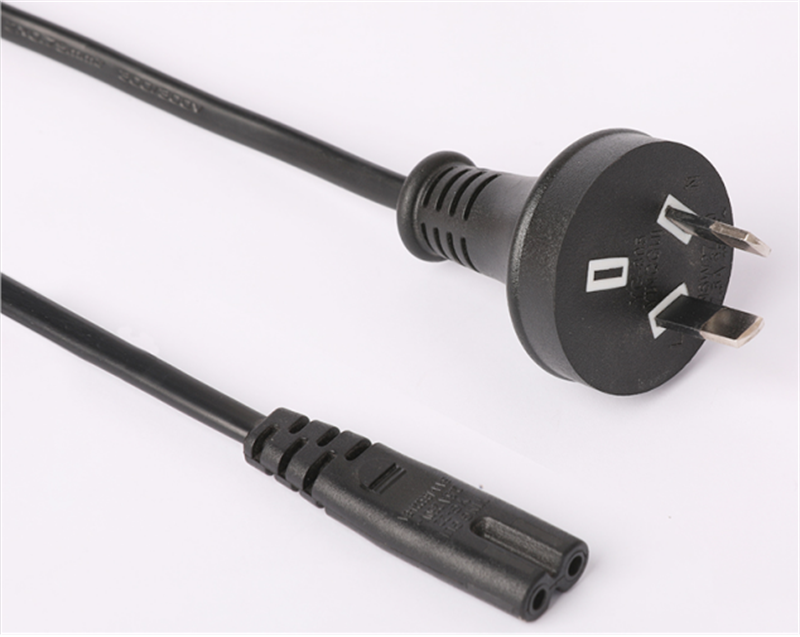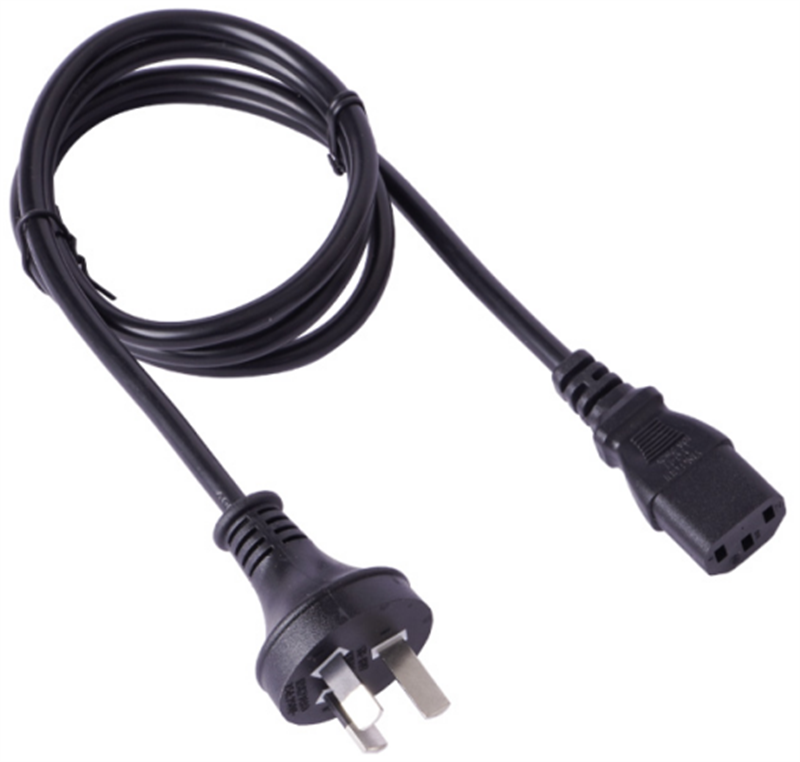
What is 2 pin power cord with SAA certification? How many types of cord cables are on the market today? Let’s find out useful information about this product through the article below.
Power cord is a product line common to pull network lines, signal transmission lines for radio equipment. However, in this product there are many different categories. So what are their specific uses? Follow the article below to get more useful information about power cord cable.
What is cord cable?
Cordial network cables first appeared in 1880. To this day, they are even more widely common in the electrical and electronic industries. In essence, power cord with SAA certification is an electrical cable that consists of a core. It has a large dielectric that prevents current from passing.
Outside this layer, people wrap an additional layer of metal braid; the outermost layer is an insulating sheath. Similarly, the most common cord cable product is the antenna wire to your TV.
Best Application of 2 pin power cord with SAA certification
Why this product line is famous as 2 pin power cord with SAA certification? This name comes from the fact that all coatings share a common geometric axis. Each individual part in the cordial network cable structure has its own use to provide the best signal transmission for users.
Uses of network cables – power cords
Power cord products are widely common in cable television network. This comes by its very efficient signal transmission. Specifically: the transmission speed can reach 35Mbps or can transmit data as fast as hundreds of MHz. Moreover, the signal transmission feature is much better than conventional copper cables.
There are many different uses of 2 pin power cord with SAA certification
In addition to cable television, power cord is also widely common in high-speed internet services, surveillance cameras, telephones, VoilP, etc. Some other radio fields also use this product such as satellite television, digital television, radio, etc.
Cord cable carries all the features of the conventional power 2 pin power cord with SAA certification. Specifically:
●Produced on Japanese technology lines, genuine cables create absolute confidence in the quality of the finished product.
.The copper core of the cable is up to 1.02mm thick
.The solvent-insulating layer is made of FPE plastic material, which provides high durability and prevents high power transmission to the outside.
Dual anti-interference layer effectively reduces transmission loss
●The outer sheath is made of PVC material for maximum strength and cable protection, extending the service life
●Furthermore, fully integrated power cords on cables
●Similarly, high cable strength, inert response to all common weather conditions
With this series of features, professional companies offer best 2 pin power cord with SAA certification. .
Cord cables include many different types including:
Compared to other product categories, 2 pin is the cheapest on the market and is the most common. The difference of this type of wire is whether or not there is an anti-interference metal coating separating the cable from the outer plastic sheath.
Accordingly, the type with this anti-interference layer is called an FTP cable; the other is called a UTP cable. Moreover, the maximum signal transmission rate of 2pin wire is very effective.
2 Pin Power Cords
The advantage of this cable type compared to 2pin power cord is the ability to transmit stronger signals and better reduce signal transmission noise.
3Pin Power Cords

Many people will be surprised with the signal transmission speed of 2 pin power cord with SAA certification. Thanks to that, the transmission line is always stable and the best transmission.
Why do you need reliable 2 pin power cord with SAA certification?
Perhaps this is the type of conductor with the fastest and strongest signal transmission of all the above products. In this conductor, the standard of every part has been significantly increased:
●the plastic sheaths of the cores have increased in thickness significantly
●more developed anti-interference shell, with maximum anti-interference ability
●Similarly, the outer shell ensures good quality against all weather conditions.
This type of wire is common for signal transmission over long distances, almost holding the position of the main power cord for television wiring systems.
Cable, wire and cord – are the differences important?
And are there any differences at all? Pros of electrical affairs will unequivocally say that there are, and quite significant ones. But the majority of ordinary “users of electricity” either completely identifies 2 pin power cord with SAA certification.
Why not figure it out once and for all, dotting all the “i”? Moreover, it is not difficult at all: just read on! An abstract example: each of us knows exactly how a passenger car, an SUV and a truck differ.
A similar situation with a wire, cord and cable! All of them are representatives of one family – the family of cable products. And to distinguish them is no more difficult than in our example from the wheel world.
What materials we use in 2 pin power cord with SAA certification?
But in addition to polyethylene, there may be a winding or braid made of fibrous materials or wire. It is also important that the wire is easy to insulate – that is, the conductive core in the suit of Adam and Eve (bare wire). The specific design of 2 pin power cord with SAA certification depends on the purpose. Free winds are an element for bare wires (PSO, PS, A, AC, etc.).
They are common on overhead transmission lines; but self-supporting insulated wires are also common there. Insulated wires are common in home networks. A very important detail: the wire does not intend for lying underground and in water. This is why, although the sheaths may vary, the conductors rather modestly protect compared to the cable.
The use of different shades of insulation and wire busbars the accept standard for cable marking:
●The phase vein is marked in brown and black;
●Moreover, neutral wires – blue;
●Similarly, grounding conductors – yellowish-green color tone.
Expiration date of the Power Cord
The actual time of use of the product according to standard technical characteristics may vary. For cables with plastic insulation, the actual duration and time of use is approximately 25 years. Paper impregnated wires are easy to use for 30 years.
Post time: Mar-12-2022



